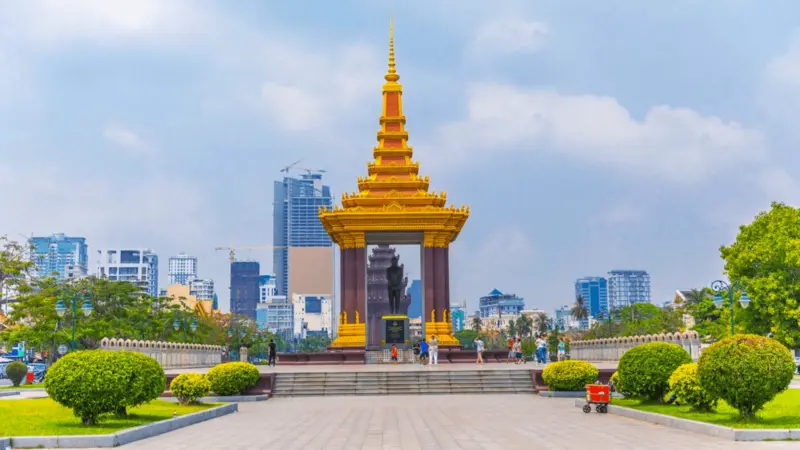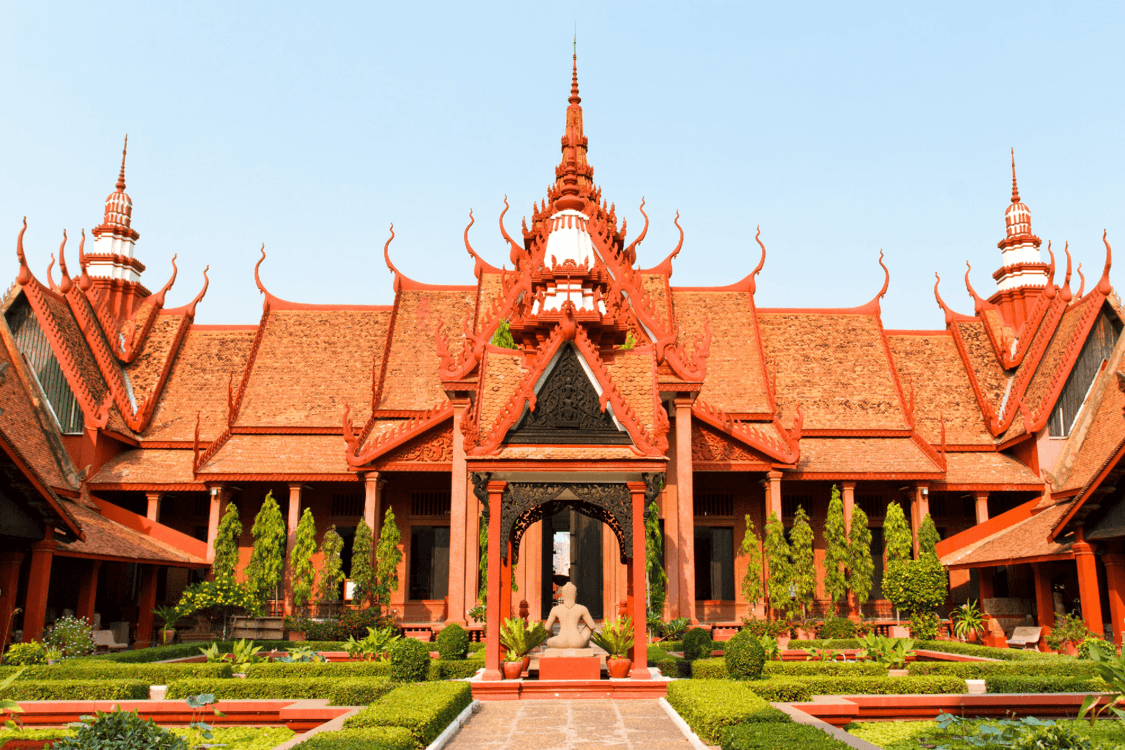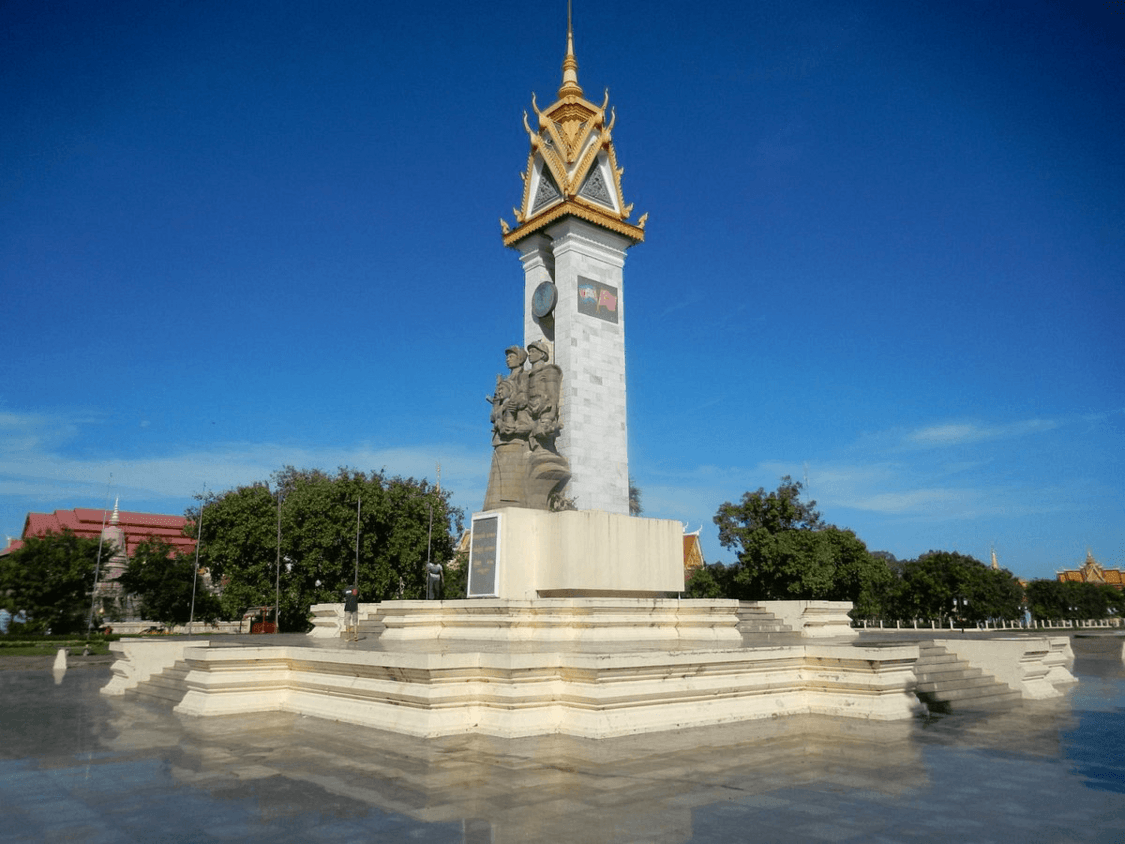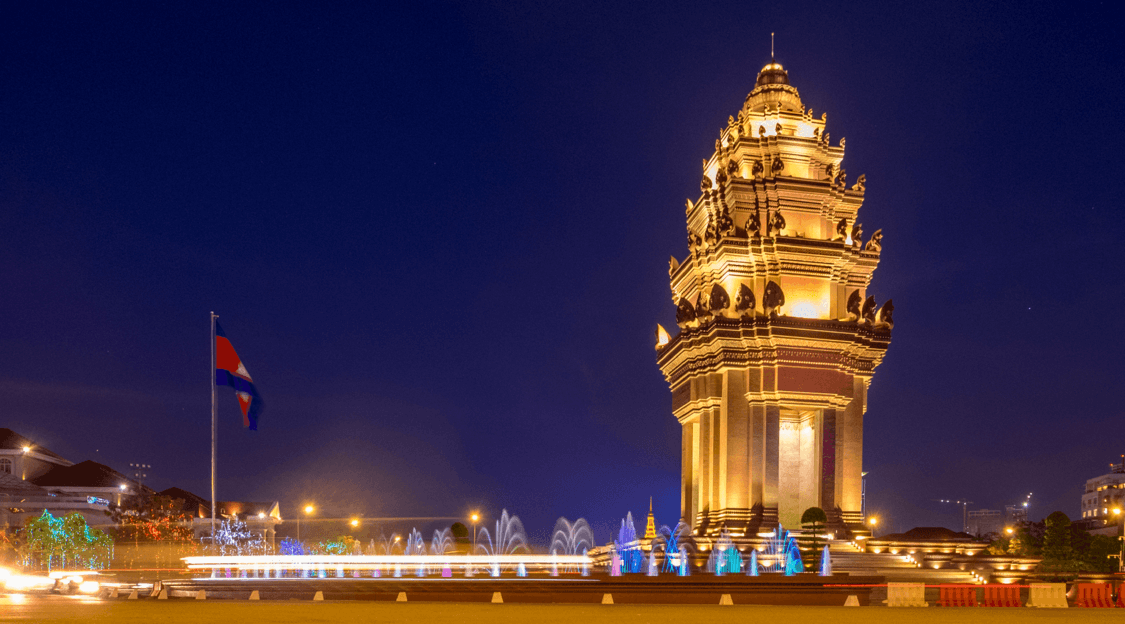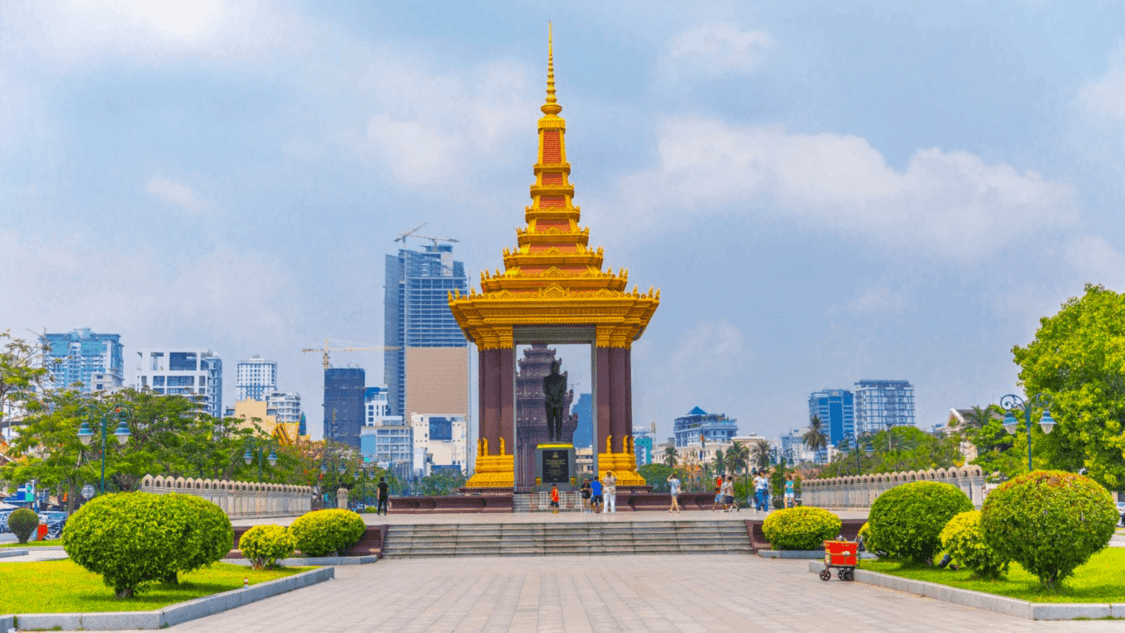National Museum of Cambodia
The National Museum of Cambodia is renowned for its gabled roof, carved doors, and the architectural style of ancient Khmer temples, skillfully blending traditional Khmer architecture with French colonial style.
Currently, the museum houses approximately 15,000 artifacts, with around 2,000 pieces on display at any given time. The museum's collection is rich and diverse, covering different historical periods, including the prehistoric stage and the early, middle, and late periods of the Angkor dynasty. The main exhibits include four categories of items: stoneware, bronzeware, ceramics, and woodwork. In addition, the museum also holds some oil paintings, textiles, photographs, and other archival materials.
Cambodia-Vietnam Monument
The Cambodia-Vietnam Monument is located in the center of Phnom Penh, adjacent to the Independence Monument. It was built in 1979 to commemorate the historical event of Cambodia and Vietnam fighting together to overthrow the Khmer Rouge regime. The monument is surrounded by a square where many people come to walk and exercise in the evening. At night, there are beautiful fountain and light shows on the square, providing a splendid visual experience. During the day, you can come here to take photos with the blue sky as a backdrop, which will surely present a beautiful scene.
Independence Monument
The Independence Monument was built to commemorate Cambodia's complete independence from French colonial rule on November 9, 1953. It is located in the center of Phnom Penh, at the intersection of Norodom Boulevard and Sihanouk Boulevard, right in the middle of Independence Square. The monument was designed by the famous Cambodian architect Vann Molyvann and was completed in March 1958. It stands 37 meters tall, with seven tiers, and the top is adorned with a seven-headed naga, a symbol of Cambodian culture. The body of the monument is shaped like a five-tiered lotus bud, beautiful and magnificent. Every year on National Day, the King of Cambodia or his representative holds a grand celebration here to commemorate this important historical moment.
Statue of King Father Norodom Sihanouk
The Kingdom of Cambodia government built this bronze statue to express gratitude to the late King Father, the founder of Cambodia's independence and national reconciliation, Norodom Sihanouk, and to forever commemorate his historic contributions to national sovereignty, independence, reconciliation, peace, and development.
The Kingdom of Cambodia government built this statue to shape the image of King Father Sihanouk, so that the Cambodian people can remember this great monarch for generations and continue to strive towards the direction he guided, building a better Cambodia.
